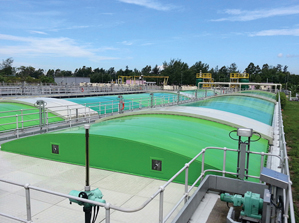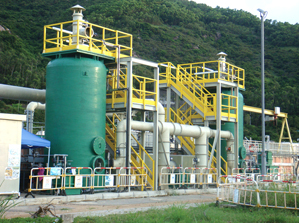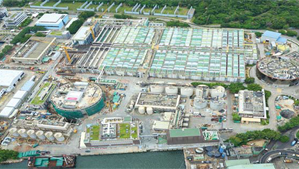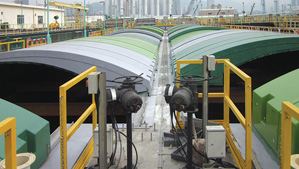Enhancing the environmental performance of our territorywide facilities is a crucial part of the environmental management strategy. Apart from this, we also engage our staff and suppliers to protect the environment in various ways, such as promoting green culture and green procurement.
Odour Management
Odour Control Measures at Siu Ho Wan Sewage Treatment Works
DSD has been monitoring and controlling the odour level at Siu Ho Wan STW since 2007. The control measures employed include:
- dosing ferric chloride as a replacement of Alum in the sewage treatment process for suppressing unpleasant smell and increasing the efficiency of sludge sedimentation;
- installation of two water scrubbers and one carbon filter system for more effective control of the exhaust from sludge treatment system;
- covering channels of the Ultraviolet Disinfection System;
- carrying out weekly odour patrols by in-house staff and regular odour surveys by a Hong Kong Laboratory Accreditation Scheme accredited laboratory;
- installation of a weather station to collect 24-hour data of hydrogen sulphide levels and wind speed for monitoring the odour situation; and
- installation of airtight fibreglass reinforced plastic covers and Biotrickling Filters on primary sedimentation tanks (anticipated completion by end 2014).
Odour Management for Harbour Area Treatment Scheme
During the design stage of Harbour Area Treatment Scheme (HATS) Stage 2A, an odour management plan was formulated for Stonecutters Island Sewage Treatment Works which recommended all major existing and planned odouremitting facilities, such as the main pumping stations, sedimentation tanks, sludge dewatering facilities, silos and flow chambers, to be self-contained and deodourised with a view to eliminating potential odour nuisance.
The main components of odour control measures under HATS Stage 2A include the containment system, ventilation system and deodoursation units. Key considerations in odour control design include odour strength, air-change rates, life-cycle costs and footprint requirements. Below are some of the odour control measures that have been implemented or are being implemented under HATS Stage 2A:
- The sedimentation tanks have been covered since June 2012, and the odourous gas is now extracted and transferred to the biotrickling filters for deodourisation. Biotrickling filter has been adopted as it can minimise chemical consumption and handle large-volume deodourisation at a high hydrogen sulphide removal performance of over 99 per cent.
- The sludge dewatering facility has adopted chemical scrubber as the prime deodourisation technology as it can handle foul air of varying odour strengths within a compact footprint.
- At flow chambers where the chance of odour emission is relatively low, a passive approach of containment with pipe work connected to activated carbon deodourisation units has been adopted. This approach requires less energy consumption and minimises maintenance requirement.












